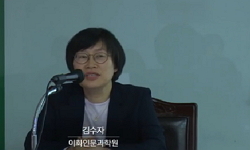The purpose of this study is to examine whether strengthening gender quotas is a viable alternative to increasing women’s technical representation in the context of young adult generation issues. We examine the institutional enforcement of gender qu...
http://chineseinput.net/에서 pinyin(병음)방식으로 중국어를 변환할 수 있습니다.
변환된 중국어를 복사하여 사용하시면 됩니다.
- 中文 을 입력하시려면 zhongwen을 입력하시고 space를누르시면됩니다.
- 北京 을 입력하시려면 beijing을 입력하시고 space를 누르시면 됩니다.
https://www.riss.kr/link?id=A109070218
- 저자
- 발행기관
- 학술지명
- 권호사항
-
발행연도
2024
-
작성언어
-
-
주제어
여성할당제 ; 여성 ; 청년세대 ; 기술적 대표성 ; 임계점 ; Gender Quotas ; Women ; Young Adult Generation ; Descriptive Representation ; Critical point
-
KDC
300
-
등재정보
KCI등재
-
자료형태
학술저널
-
수록면
6-36(31쪽)
- 제공처
- 소장기관
-
0
상세조회 -
0
다운로드
부가정보
다국어 초록 (Multilingual Abstract)
The purpose of this study is to examine whether strengthening gender quotas is a viable alternative to increasing women’s technical representation in the context of young adult generation issues. We examine the institutional enforcement of gender quotas through an empirical analysis. The results show that legal gender quotas are associated with higher proportions of female candidates and female MPs, while proportional systems are not significant when controlling for the level of democracy. Variables related to young adult generation, such as the minimum age of eligibility and the proportion of young adult legislators, also affect the proportion of female legislators. These results suggest that a combination of the gender quota and the young adult generation quota can be a significant alternative. The introduction of a quota system combining the representation of both groups requires additional research.
동일학술지(권/호) 다른 논문
-
- 한국의회발전연구회
- 김민정
- 2024
- KCI등재
-
「정치자금법」 일부개정: 정치자금 모금의 자유! 국민의 알권리?
- 한국의회발전연구회
- 유성진
- 2024
- KCI등재
-
한국 민주주의 제도에 대한 합리적 선택 신제도주의의 분석
- 한국의회발전연구회
- 조석주
- 2024
- KCI등재
-
- 한국의회발전연구회
- 우병득
- 2024
- KCI등재





 KISS
KISS







